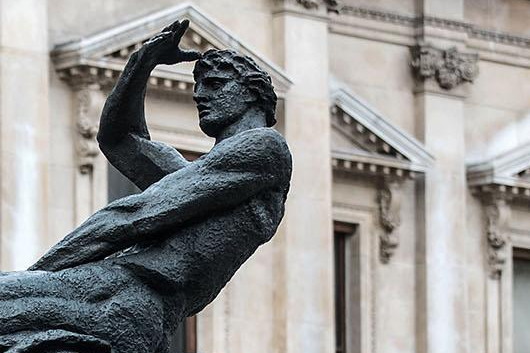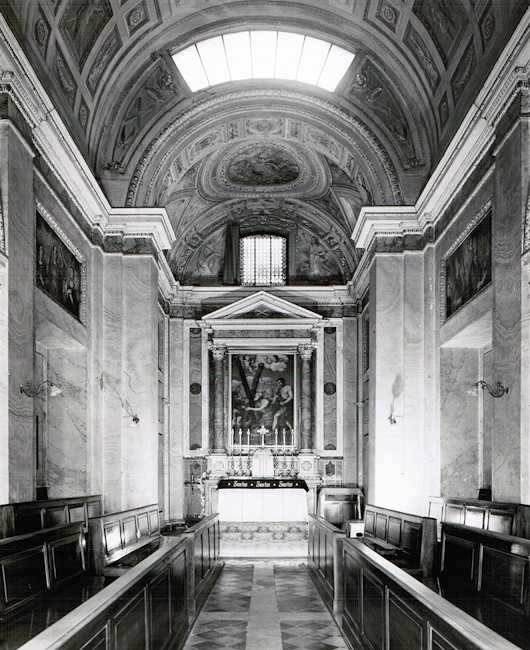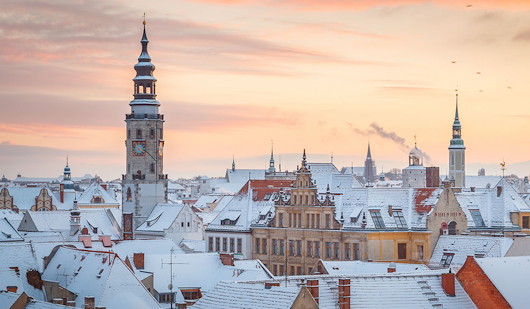Arts & Culture
About Andrew Cusack
 Writer, web designer, etc.; born in New York; educated in Argentina, Scotland, and South Africa; now based in London.
Writer, web designer, etc.; born in New York; educated in Argentina, Scotland, and South Africa; now based in London. read more
News
Blogs
Reviews & Periodicals
Arts & Design
World
France
Mitteleuropa
Knickerbockers
Argentina
The Levant
Africa
Cape of Good Hope
Netherlands
Scandinavia
Québec
India
Muscovy
Germany
Academica
Physical Energy
I came across it by surprise one day, walking through the park. It was almost eerie — all the more so for being unexpected. George Frederic Watts’s sculpture “Physical Energy” was well known to me when I lived in South Africa as it graces the Rhodes Memorial in Cape Town — a rough Greek temple staring out northwards into the vast continent of Africa, as Rhodes himself liked to do.
Unknown to me, another cast of the statue was made and given to the British government, which placed it in Kensington Gardens. It was this copy I stumbled upon while traversing the park to Lily H’s drinks party in the garden of Leinster Square.
It is one of the most aptly named sculptures I can think of, as there is a raw brutish physicality to it, and somehow a sense of tremendous force, power, and energy. Watts was primarily a painter, so that he achieved this great work of sculpture is all the more remarkable. I don’t actually like it: there is something uncomforting and almost vulgar about it, or perhaps just taboo. (Like Rhodes himself.) But it is amazing all the same.
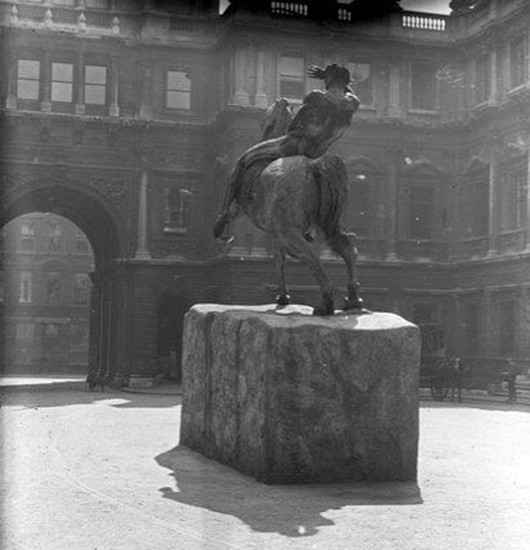
While “Physical Energy” is primarily associated with Cecil Rhodes it was not commissioned in his honour. Watts conceived it in 1886 after having done an equestrian statue for the Duke of Westminster. The first cast wasn’t made until 1902 and was exhibited at the Royal Academy for the first time in 1904 (above).
From there it made its way to Cape Town where it stands today a vital component of the monument to Rhodes. (It even features as the crest on Rhodes University’s coat of arms.) The second cast from 1907 is this one that sits in Kensington Gardens, while a third cast from 1959 now sits beside the National Archives of Zimbabwe in Harare.
This year the Watts Gallery in Surrey commissioned a fourth cast to commemorate the two-hundredth anniversary of the artist’s birth — and that cast now flaunts its bronze in the courtyard of the Royal Academy. It remains on view until the Cusackian birthday in March 2018.
“Get me ze Führer!”
Stereotypes of Nazi generals in British war films
“The reason for my uniform being a slightly different colour to yours
is never explained.”
The British are, of course, obsessed with the Nazis. There are many reasons for this, amongst which we must include the large number of really quite good war films produced during the 1950s and 1960s.
For some indiscernible reason these movies have the virtue of being eternally rewatchable and many a cloudy Saturday afternoon has been occupied by Sink the Bismarck!, Where Eagles Dare, or The Colditz Story.
The genre also deploys with a remarkable regularity a number of familiar tropes of ze Germans which the above clip from a British comedy sketch programme (introduced to me by the indomitable Jack Smith) aptly mocks.
Gallen-Kallela at the National Gallery

From November 15 until February of next year, the National Gallery here in London will mark the centenary of Finnish independence with a showing of the works of Akseli Gallen-Kallela. The Finnish painter is best known for his depictions of the Kalevala, the national epic compiled by Lönnrot and an influence on Tolkien.
The National Gallery, however, has focused on bringing together all four versions of Gallen-Kallela’s painting of Lake Keitele (alongside similar works by the artist). As a Swedish-speaking Finn, he signed the painting with his original Swedish name, Axel Waldemar Gallén, which he later Finnicised in 1907.
During Finland’s Civil War, Gallen-Kallela and his son Jorma both took up arms on the side of the Whites, who defended the country from the Soviet-backed Reds. The artist (below) served as adjutant to the regent of the kingdom, Gen Mannerheim, who asked him to design the flag, uniforms, and decorations of the new state. His student Eric O. Ehrström designed a crown for the kingdom, but eventually a republican form of government was decided upon and it wasn’t til the 1980s that a mock-up of the crown was actually crafted.
Having lived in Berlin and Kenya as well as having toured the United States, Gallen-Kallela’s influences were varied but he found the story and scenery of his homeland the most compelling of all. A fitting tribute to Finland in her hundredth year of statehood.
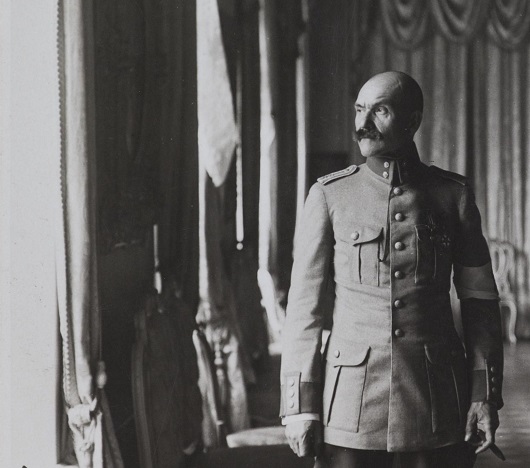
The ‘Other Modern’ in Portugal
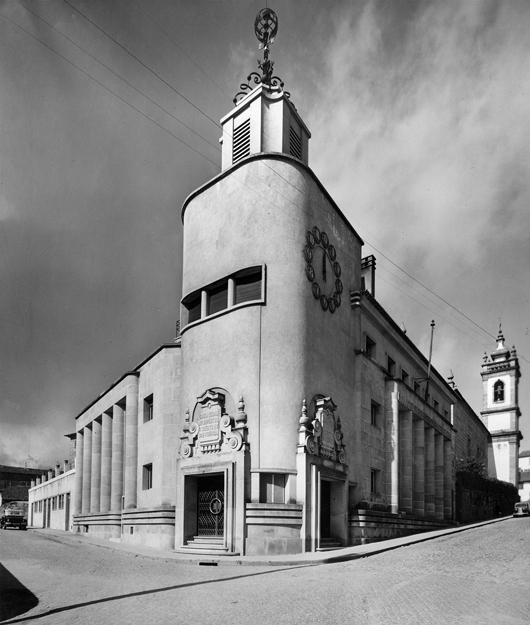
Guarda, Portugal; 1939–1942
[A] core aspiration can be discerned that runs through the entire [architectural] output of the “Estado Novo”, particularly from the second half of the 1930s. It is a catchphrase, never defined with absolute clarity and therefore tested by approximation, trial and error: the demand for a national modern style, a construction style that was at the same time contemporary and suited to the locality and/or specificity of the country. This agenda accommodated various formulations, depending on the evolution of the regime itself, the type of public building in question, the place for which it was intended, the profile of the people responsible for its appraisal and the margin granted to the architect-designer. […]
Salazarism never upheld anachronism or the practice of an archaeological type of architecture. It did not reject modernity entirely, but disliked disaggregating, standardising, stateless foreignness, embodied in its view by the architectural abstractionist internationalism (dubbed “boxes”). An alternative modernity was thus aspired to and achieved; far from being an exclusive diktat of the state, this idea of an alternative modernity pervaded the discourses of the timid specialist press, the opinions generally expressed by the civil society and the dilemmas of the architects themselves.
RIHA Journal 133, 15 July 2016
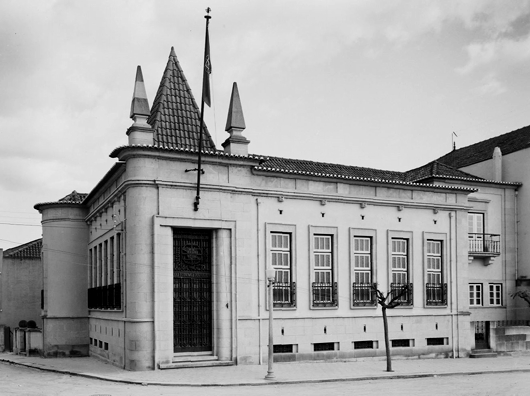
See also: The Other Modern
Lisbon
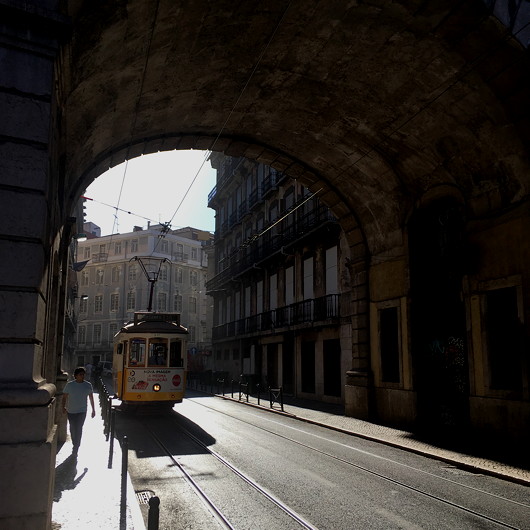
One of the finest cities I have had the privilege of visiting, only lightly touched by the grim hand of modernism.
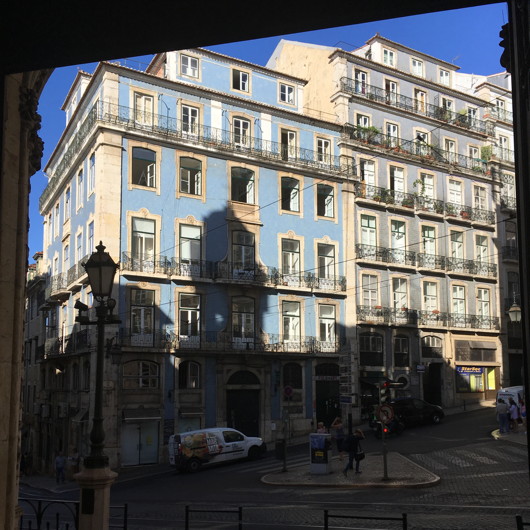
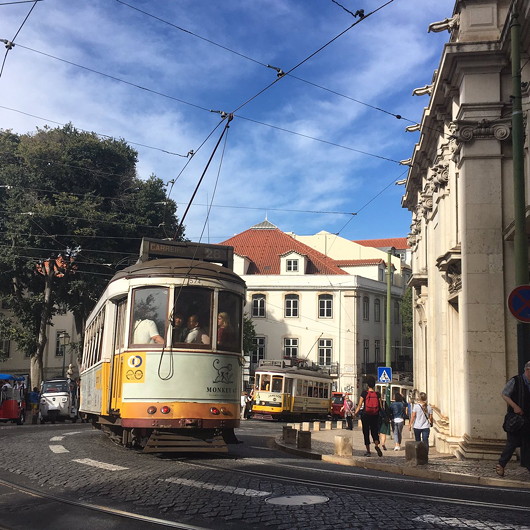
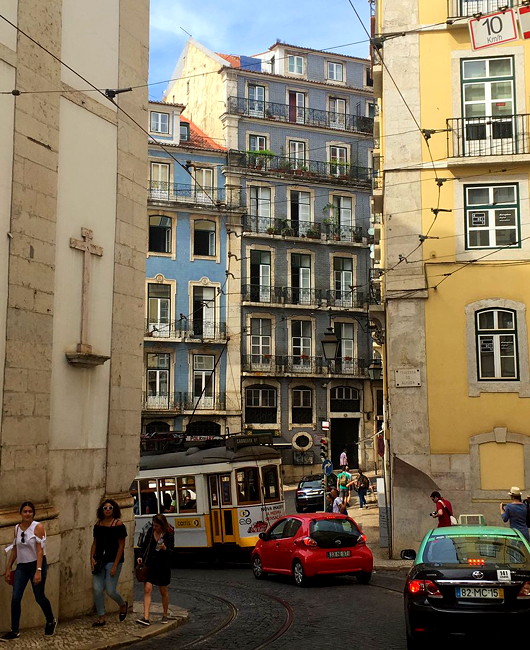
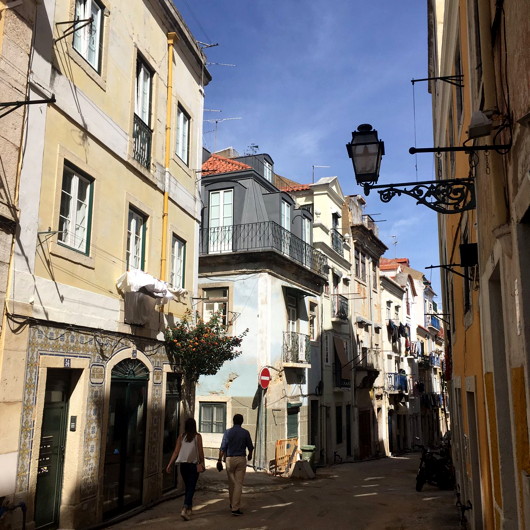
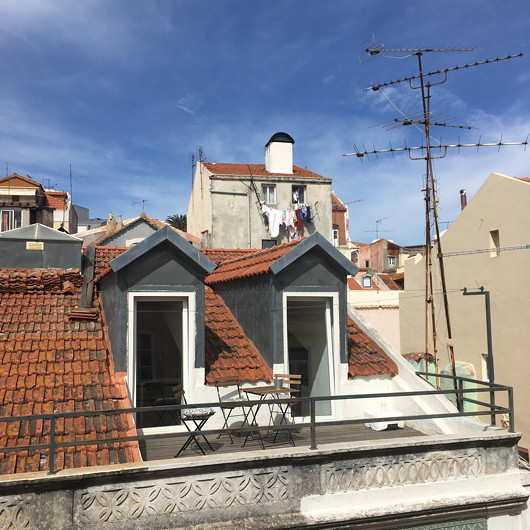
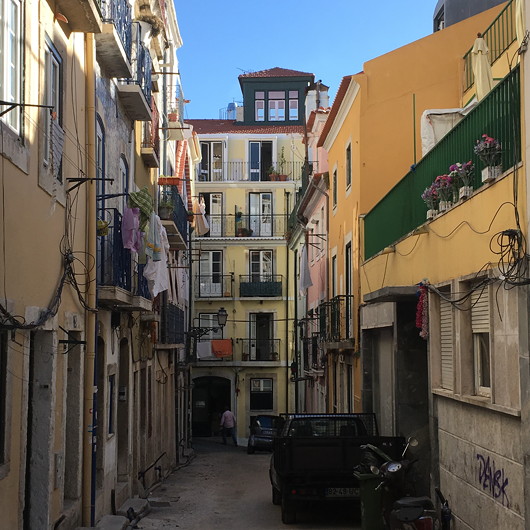
Justice in the Royal Gallery
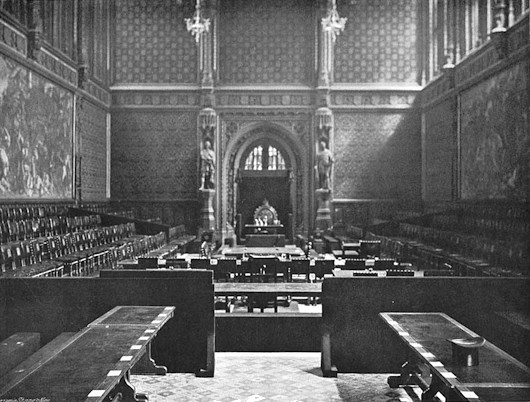
One of the great triumphs of Magna Carta was the assertion of the right of those accused of crimes to trial by one’s peers, or per legale judicium parium suorum if you insist on the Latin. For commoners this meant trial by other commoners, but for peers it meant just that: trial by other peers of the realm. It was a bit murkier for peeresses, though after the conviction for witchcraft of Eleanor, Duchess of Gloucester, (sentence: banishment to the Isle of Man) statute was passed including them in the judicial privilege of peerage.
Thanks to the ’15 and the ’45, there were a number of trials in the House of Lords in the eighteenth century, including that of the Catholic martyr Earl of Derwentwater. The whole of the nineteenth century, however, witnessed but one: the 7th Earl of Cardigan was acquitted of duelling by a jury of 120 peers. In 1901 the 2nd Earl Russell was found guilty of bigamy, and the last ever trial came in 1935 when the 26th Baron de Clifford was found not guilty of manslaughter.
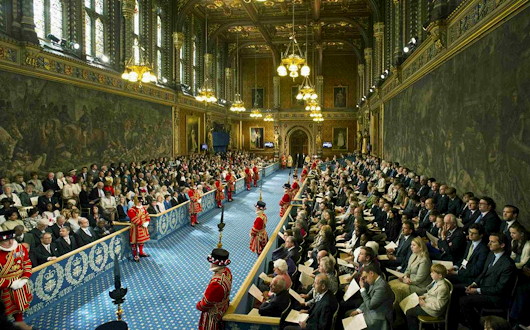
Cardigan’s trial was in the temporary Lords chamber while the last two trials took place in the Royal Gallery of the Palace of Westminster (central to current debates over renovation plans). For Cardigan’s trial the Lord Chief Justice of the Queen’s Bench was appointed Lord High Steward for the occasion, while for the final two the Lord Chancellor was likewise appointed to the role in order to be presiding judge with the Attorney General prosecuting the case.
The Royal Gallery is primarily used for the State Opening of Parliament (as above) and for the occasional address to both Houses of Parliament when important figures are invited to do so. De Gaulle was famously invited to speak here to both houses rather than in the larger Westminster Hall. It is thought that this is because the walls of the Royal Gallery feature two large murals, one of the Battle of Trafalgar, the other of the Battle of Waterloo – both British victories over the French.
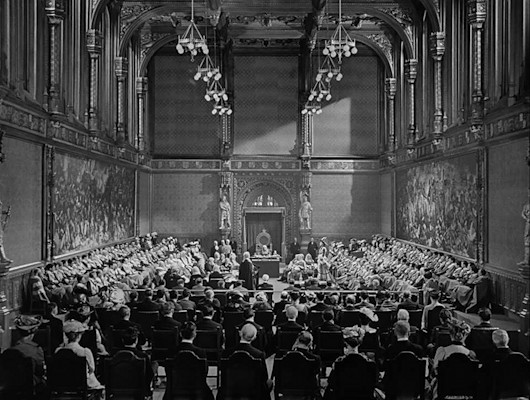
The most famous trial in the Royal Gallery was fictional. In the 1949 Ealing comedy “Kind Hearts and Coronets”, the 10th Duke of Chalfont is tried for the one murder in the film’s plotline he didn’t actually commit. Ealing Studios did a mock-up of the chamber for the occasion (above), which compares reasonably accurately with the Royal Gallery as set up for the Baron de Clifford’s trial in 1936 (below).
The Lords, however, were uncomfortable with exercising this judicial function and passed a bill to abolish the privilege in 1937. The Commons, facing more serious tasks, declined to give it any attention. In 1948, the Criminal Justice Act abolished trials of peers in the House of Lords, along with penal servitude, hard labour, and whipping.
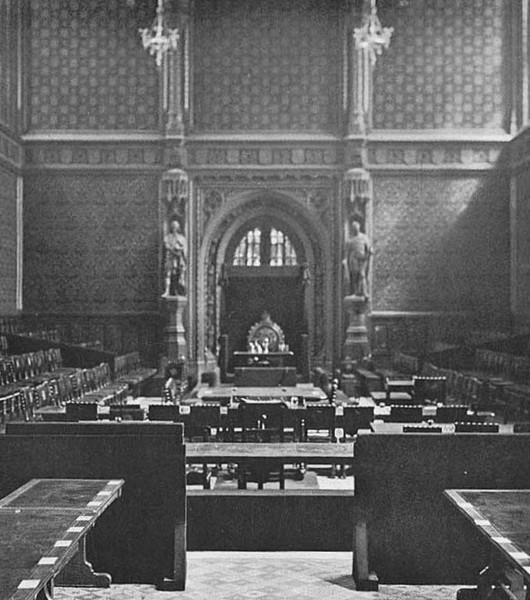
Hougaard Malan
South African Landscape Photographer
When I lived in South Africa I began to understand the deficiencies of photography. The scenery in which one we had the privilege of acting out “the foolish deeds of the theatre of our day” (as Mr Mbeki put it in one of his better speeches) was stunning, but on the few occasions I bothered to put my Leica to good use the results were disappointing. You’d look at a photograph that was admittedly beautiful but still think to yourself “But in real life it was a thousand times more beautiful than that!” Needless to say, my own lack of skill as a photographer is the most obvious cause.
Hougaard Malan, meanwhile, is one of the few photographers who manages to almost, nearly capture the beauty of the South African landscape. In each and every shot — and some of these places are well known to me — the scale and drama of the location shines forth.
“Growing up, my grandmother always gave me illustrated encyclopedias and books about earth’s natural history that were filled with fantastic landscape images,” Mnr Malan says. “I spent many afternoons paging through these books and marvelling at nature’s beauty. Few things in life made me feel more alive than a landscape that engaged all my senses – seeing the rhythmic rolling of waves in a bay, smelling the coastal flora, hearing and feeling the ocean crash against the cliffs and then tasting the salt in the air.”
Mnr Malan’s website can be found here but here is just a small sampling of the photographs of southern Africa and well beyond which this talented man has taken.
From Realm to Republic
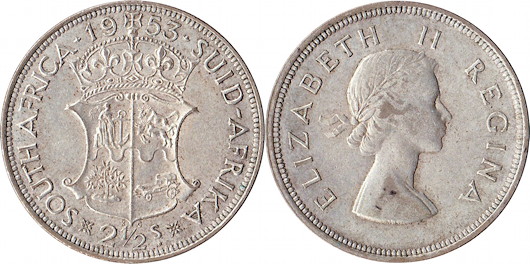
South Africa’s transition from a monarchy to a republic coincided with a change of currency. Out went the old South African pound (with its shillings and pence) and in came the decimilised rand.
Luckily the republican government had the good taste to commission George Kruger Gray, responsible for the country’s most beautiful coinage, to design the new coins. HM the Queen was replaced by old Jan van Riebeeck, and the country’s arms were deprived of their crown.
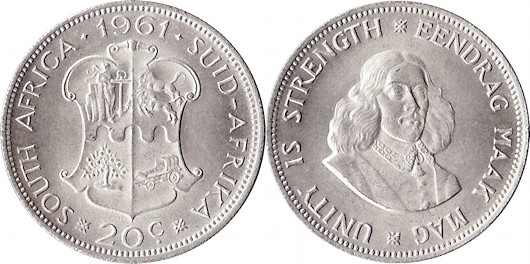
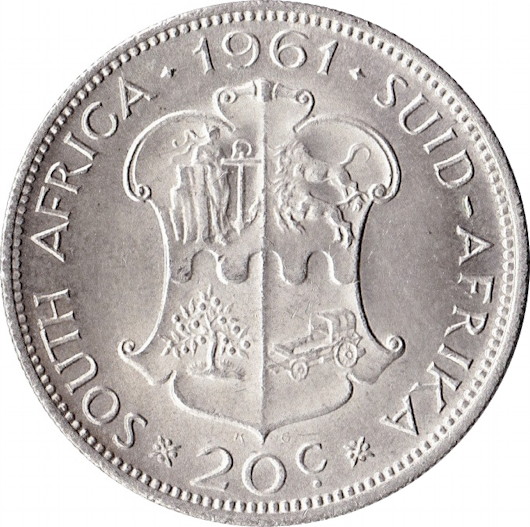
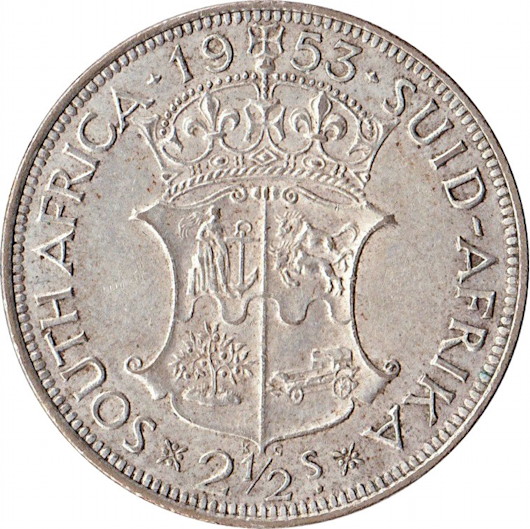
Challoner’s House
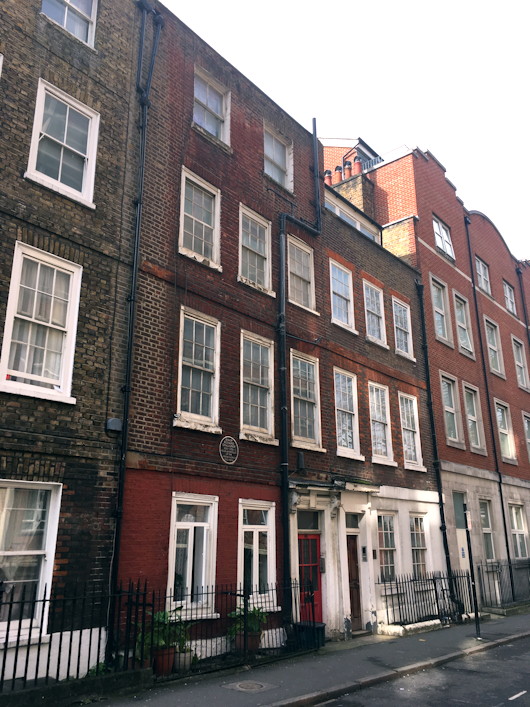
Challoner’s House — Rather humble for an episcopal palace, but such was the function of No. 44, Old Gloucester Street in Holborn during the time of Bishop Richard Challoner.
If it seems an odd spot for London’s Catholic bishop, it can be explained by its close proximity to the chapel of the Sardinian Embassy off Lincoln’s Inn Fields. At this time, of course, the Mass was still illegal and the only places Catholics in London could worship were the embassies of the Catholic nations. To protect the underground bishop, the house in Old Gloucester Street was actually rented in the name of his housekeeper, Mrs Mary Hanne.
After a perfect breakfast on Saturday morning the sun was shining so I decided the three-and-a-half miles home from St Pancras were best managed on foot. If architectural or historical curiosities are your fancy then foot is the way to travel, and so it was by pure chance that I stumbled upon No. 44. It seemed particularly appropriate that the night before a whole gang of us — Brits, Swedes, Italians, etc. — had been drinking in the Ship Tavern in Holborn where Bishop Challoner was known to offer the occasional clandestine Mass. (more…)
The Old Scots College
Via delle Quattro Fontane, Rome
Next month I’m off to Rome and the last time I was there I happened to walk past the old Scots College on the via delle Quattro Fontane. The Pontifical Scots College is probably the oldest Scottish institution abroad and certainly one of the most important, both historically and today. As Scotland’s primary seminary it has — almost literally — helped form the soul of the country, particularly during times of widespread persecution back in the mother country.
The church of Sant’Andrea degli Scozzesi (St Andrew of the Scots) was built in 1592 during the reign of Clement VIII, and early in the seventeenth century the church and neighbouring hospice were given over to the Scots College which had been founded a few years before. The seminary building itself was (I believe) built much later, in the nineteenth century after the college briefly ceased instruction due to the tumult of the French Revolution.
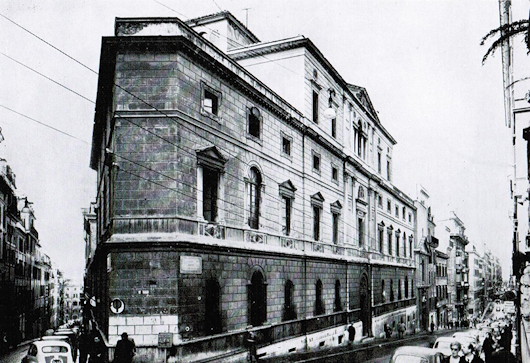
Sadly the building was not very well maintained and by 1960 it was falling apart. It was decided to sell the old college buildings in the Via delle Quattro Fontane and move to a larger site out the middle of nowhere in the Via Cassia. The move was made in 1964, and the Scots College has remained there ever since, while the old college housed a bank for many years and more recently a lawfirm.
Fillon: Which Right?
A Rémondian Analysis of the French Presidential Candidate
One of the most significant contributions of the historian and political scientist René Rémond was his theory regarding the tendencies of the French right wing. He contended that, broadly speaking, there are three right wings in France: legitimist, bonapartist, and orleanist. These terms are not bound by their historic use, but rather (Rémond argued) serve as useful guides to understanding French conservatism today.
Gaullism, for example, with both its populism and its reliance on the authority of a charismatic leader, is classified as bonapartist. Social conservatism, meanwhile, with its affinity for the Church and for tradition, comes in under legitimism. And economic liberalism — the bourgeois supremacy of the markets — is orleanist.
What to make of the current presidential candidate of the French right, M François Fillon? The Québécois website Dessinons les élections (“Let’s draw the elections”) sought to apply a Rémondian analysis of Monsieur Fillon in one of its weekly cartoons (by Frédéric Mérand & Anne-Laure Mahé).
Their conclusions are as follows:
Legitimism: 60%
– social conservatism
– Christian values
– order and traditionOrleanism: 30%
– economic liberalismBonapartism: 20%
– a sense of the State
– idea of the providential man with reference to de Gaulle
Of course, many now think that, due to the usual scandals, Fillon is yesterday’s man and that Macron is the man of the hour. The two are chalk and cheese. Fillon is the family man from the country, loves hunting, and clings to the values of the Church. Macron is a socialist énarque and investment banker who married one of his school teachers (twenty-four years his senior).
The elephant in the room: Madame Le Pen. The leader of the Front national will, there is almost no doubt, top the first round of the election but then, in the second round, will have to face whichever other candidate gains the next highest number of votes. Whoever that candidate is will almost certainly gain all the anti-frontiste votes and be propelled to victory and the Elysée.
At the moment, it looks like the second candidate will only have to win around 22 per cent of the vote in order to effectively gain the presidency. Such a low level of actual support is one of the things the 1962 changes to the constitution sought to prevent, but when faced with an FN candidate as in 2002 or (presumably) this year the two-round system fails to prevent this.
As usual, the conservatives are calling for change and the progressives arguing for stasis, but it remains to be seen which option France will choose.
The slums of the Louvre
We are so used to the now-familiar image of the palais du Louvre — with its central wing and flanking arms wide open to the Jardin des Tuileries — that it’s easy to forget just how recent a creation this ensemble is. The palace began as a square chateau expanding upon the site of the medieval citadel. The Tuileries it eventually stretched towards was then an entirely separate palace. In-between the Louvre and the Tuileries was a whole neighbourhood of buildings, streets, alleyways, and squares.
Henri IV built the grande galerie on the banks of the Seine connecting the Old Louvre to the Tuileries by 1610, but the Louvre we know today really only came together under Napoleon III in the 1850s.
Until that point, a slum was built right up to the walls of the Palace, and even within the old courtyard. Balzac, predicting that one day all this would be cleared, noted the slum with amusement as “one of those protests against common sense that Frenchmen love to make”. (more…)
An Hollandic Hovel
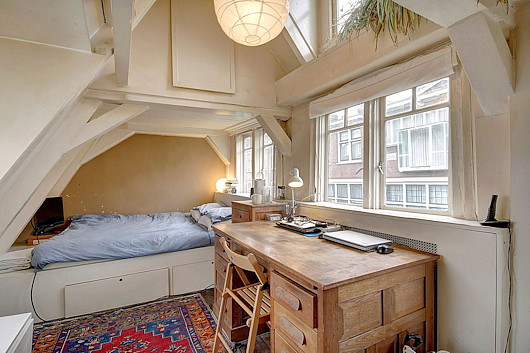
A friend sent this link to a property for sale in Amsterdam. I can easily imagine getting a lot of writing done while listening to LPs of baroque music (my latest craze) through a haze of cigarette smoke in a garret like this.
Its drawback is that it’s on an actual street — what’s the point of living in Amsterdam if you’re not on an actual canal?
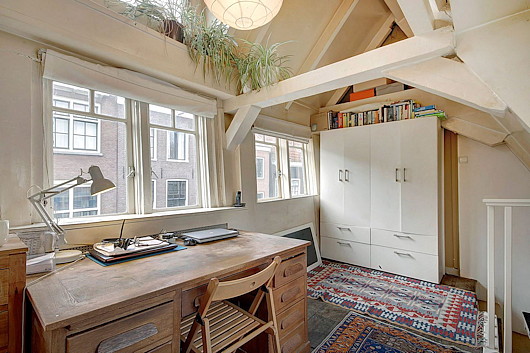
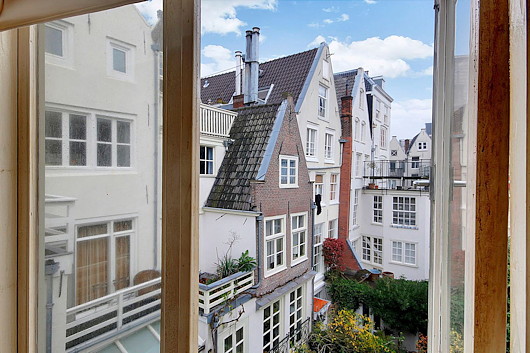
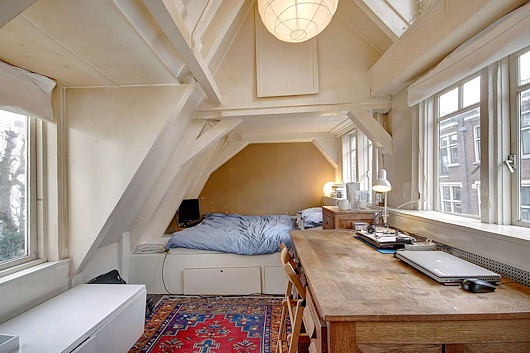
The Delarue Proposal for Parliament
Peers & MPs could still convene in the Palace during renovations
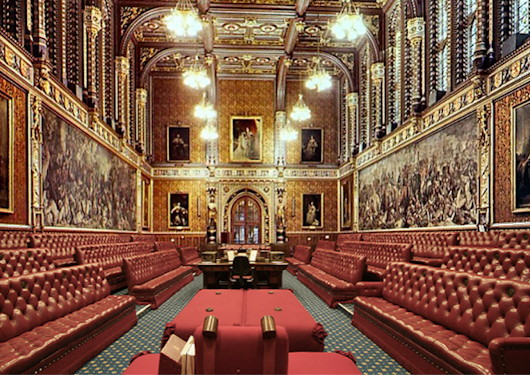
The Royal Gallery set up for temporary use as the House of Lords chamber
Credit: Anthony Delarue Associates
MPs are kicking up a fuss about the controversial proposals to shut down the entire Palace of Westminster for perhaps as long as eight or nine years. (Previously mentioned here.) The building is completely structurally sound, and on solid foundations, but the accumulation of mechanical, electrical, and technological systems over the course of the past 150 years has created a confused mess within the walls of the palace. Electrical lines compete with fibre-optic cables, telephone wires, not to mention various heating and cooling pipes, and even some lingering telegraph wires. No one’s quite sure what is what and all of it is getting older. Even just accessing it to figure out what to do requires taking the building apart — removing wood panelling, drilling through walls, etc.
Parliamentary authorities commissioned management consultants from Deloitte to come up with a number of options on how to tackle this problem, but in their Independent Options Appraisal they treated this merely as an ordinary engineering job, rather than recognising the Palace as one of the most important places in British history both medieval and modern and, importantly, one still in constant daily use.
The Joint Committee formed of members of both the Lords and Commons perhaps unsurprisingly endorsed the option Deloitte claimed was the quickest and cheapest: that the Lords, Commons, and everyone else be chucked out of the Palace entirely and that temporary accommodation be found nearby.
Further investigation by respected former minister Shailesh Vara MP suggested that Deloitte had failed to take into account that any VAT costs on this major project go back into the Treasury anyhow, and that there was a failure to account for the loss of revenue if the Lords are moved into the government-owned Queen Elizabeth II Conference Centre nearby. The QE2 is a profit-making venue popular with private clients, after all, and deploying it towards full-time legislative use will mean another significant loss for the Treasury. Meanwhile, in the courtyard of Richmond House on Whitehall, £59 million would be spent on building a new chamber for the House of Commons. This would be a permanent ‘legacy’ structure even though once the renovations to the Palace are complete there would be no use for it whatsoever.
The architect Anthony Delarue, having been taken on a tour of the Palace’s working underbelly by the engineers from the Restoration and Renewal programme, came up with an alternative proposal. Looking at the structure of the House of Lords chamber and the adjacent Royal Gallery, he realised that these two rooms could be maintained and occupied, with temporary services (electricity, heating, etc.) run from external sources. This would allow the renovation team to shut down the Palace’s systems entirely and re-do them completely, while the spaces in mind would still be able to be put to use. The Commons could then meet in the Lords chamber (as the wartime precedent suggested) and the Lords could meet in the Royal Gallery. Or indeed vice versa depending on the wishes of both Houses.
The advantages of this are no need for taking up the QE2 conference centre (with consequent loss of revenue for the Treasury) and no need to waste tens of millions on a temporary-but-permanent Commons chamber in the courtyard of Richmond House. In addition, both houses would be allowed to maintain their presence in the Palace of Westminster, in accommodation suitable to the traditions of the “Mother of Parliaments”.
Of course, the Restoration and Renewal programme ran a “high level review” of Delarue’s proposals and pooh-poohed the whole idea, amazingly claiming that it would probably cost £900 million more than the Deloitte option the Joint Committee preferred. Anthony Delarue has now written some comments responding to this review, pointing out that it relies on outrageously pessimistic estimates of timing, assumptions that are beyond the worst-case scenarios of project management.
MPs were expected to debate the matter last month, but the campaign organised by Sir Edward Leigh MP and Shailesh Vara MP has found considerable support among other Members of Parliament and it is believed the powers that be are looking for a delay. The Government have promised a free vote on the issue when it comes up for debate, which may very well be before the end of February.
● Anthony Delarue Proposal
● Deloitte Independent Options Appraisal
● Joint Committee Report
● High Level Review of Delarue Proposal
● Anthony Delarue Response to High Level Review
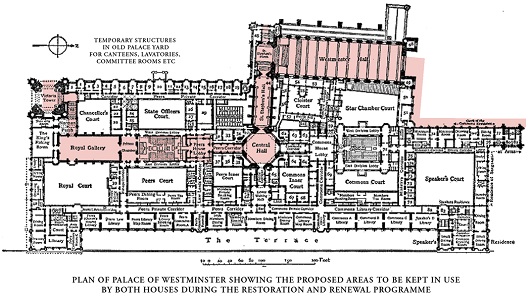
Credit: Anthony Delarue Associates
Holy Trinity Kingsway
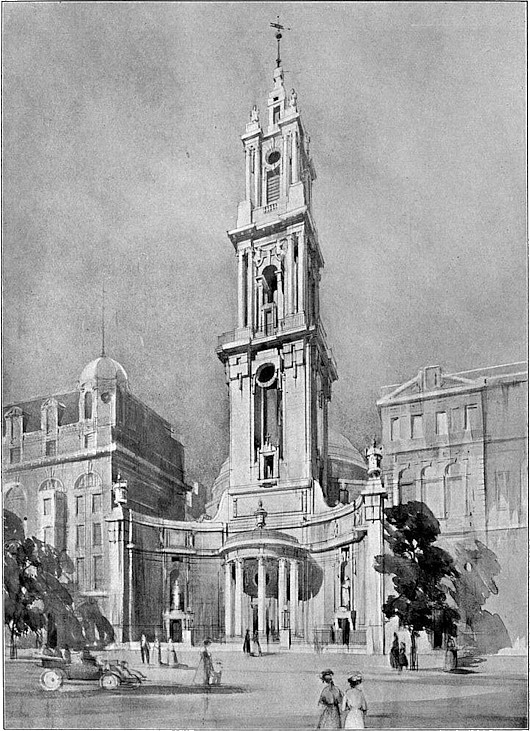
Holy Trinity, Kingsway
Not much information is available about this church. The architect was John Belcher but the ambitious tower was never built, nor was there much money to complete the interior.
After it was made redundant in the 1990s the church was demolished — except for the façade so obviously influenced by Santa Maria della Pace.
The Queen
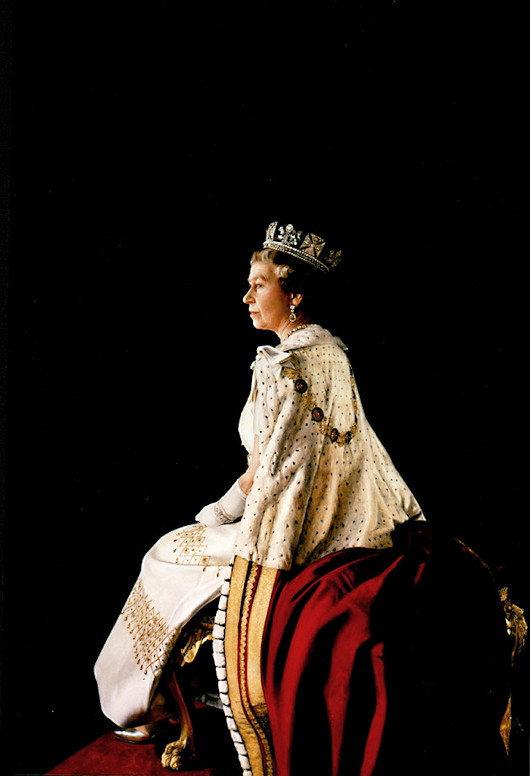
1992; Oil on canvas, 96 in. x 60 in.
Floating an Idea for Parliament
Members of Parliament are currently battling one another over plans for the ‘restoration and renewal’ of the Palace of Westminster. One side, backed by management consultants and the Joint Committee report, say the whole place has to be shut down completely for years starting in 2020. The other, led by Sir Edward Leigh MP and Shailesh Vara MP, says if work is so urgent it should start immediately, but that both the Commons and the Lords should continue to meet within the Palace, preserving centuries of tradition and keeping up the dignity and ceremony for which Great Britain is known.
With ideas flowing back and forth, outsiders to the Westminster bubble have put forth their own ideas — the architect Anthony Delarue’s suggestion has received the most serious consideration so far — and the global design firm Gensler has weighed in with its own proposal.
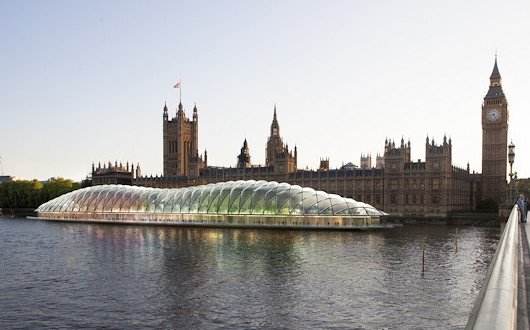
Gensler’s idea calls for a floating slug bearing a distinct resemblance to the Gherkin to be built and moored alongside the Palace of Westminster. This floating parliament would have plenary chambers for both the House of Lords and the House of Commons as well as committee rooms and other meeting places necessary to the functioning of the legislature.
While it’s a serious idea, the floating slug is not under actual consideration but is merely a conceptual exercise put out there by Gensler. Security concerns alone would lead to its rejection, not to mention worry over the hole in the historic fabric that would need to be punched through in order to access the slug. (more…)
All Change for Argentine Newspapers
BsAs Herald emerges as weekly as La Nación goes tabloid
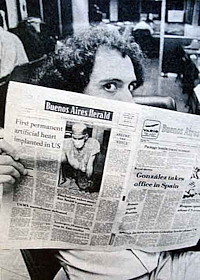
Not Lucas de Soto
One of the saddest pieces of news to hit the Cusackosphere in 2016 was word that the Buenos Aires Herald was ending its 140th year by moving from daily to weekly production. The English-language Herald has been a stalwart of its city and country and, though little known abroad, has ranked among the finest newspapers in the world. But from 2007, when Charleston’s Evening Post Publishing Company sold the Herald onwards to controversial businessman Sergio Szpolski, the paper found itself in increasingly chaotic situations. Robert Cox, Herald editor in the difficult period from 1968 to 1979, said what happened to the paper was “like a car crash”, and blamed the papers owners.
My favourite feature of the Herald was Martin Gambarotta’s weekly ‘Politics and Labour’ column — a witty and insightful peek behind the curtains of Argentine public life. Like Miriam Lord’s Dail sketches for the Irish Times, one wished it was possible to redeploy Gambarotta’s pen at will towards whichever corner of the globe one happened to be situated in.
As if that weren’t bad enough, the republic’s venerable broadsheet La Nación announced around the same time its conversion to a smaller compact size. The centre-right daily is the most prestigious in Argentina since the demise of La Prensa under Peronist persecution. While its weekend editions will maintain their broadsheet format, from Monday to Friday La Nación will be printed in a compact format similar in size to a tabloid.
Marcelo García’s explanation of the changes at the Herald can be found below. (more…)
1950s Ireland, the Church, and the Arts
Sitting in Dublin Airport waiting for a flight last week I picked up a copy of the Irish Arts Review which featured a number of interesting pieces (including something by our own Dr John Gilmartin).
Among the articles was an interview with the artist and printmaker Alice Hanratty (born 1939), a member of the Aosdána as well as of its governing council the Toscaireacht.
It was interviewer Brian McAvera’s question to Ms Hanratty about Ireland in the 40s and 50s and her response that proved most interesting.
BMcA: Artists, nevermind historians, often talk about the dark days of the 1940s and 1950s in Ireland: petty, parochial, restrictive, dominated by the Catholic Church, politically conservative and sexually repressed. How did you see this period and was it in any way formative for you as an artist?
AH: I have some experience of the period in question and don’t really recognise the description that you quote.
As far as the arts are concerned you must remember that important Irish poets, dramatists, and novelists, and also painters and sculptors worked at that time. Brian Fallon discusses all that in his An Age of Innocence. As for ‘politically conservative, restrictive, dominated by the Catholic Church’ these I think are quite sweeping statements by people who did not actually live at that time and are re-stating a received perception which is inaccurate.
As for domination by the Catholic Church, to some degree people allowed themselves to be dominated. They were OK with it. It suited them. It provided answers about the imponderables such as death. Nor should it ever be overlooked that the vicious war waged against the Irish people and the practice of their religion by way of the penal laws have had a huge detrimental effect on the national psyche which is not yet dispersed even in the 21st century.
As for political conservatism (don’t start me), that was established by the Free State Government in the 1920s making a deliberate and successful move to stamp out any form of socialism that might develop. Of course the Church was pleased to be of help there, but was not the instigator. President Higgins made reference to this period in one of his 1916 commemoration addresses, so anyone seeking enlightenment in these matters would find it there.
Were the 1940s and 1950s influential for me as an artist? No. I was too young and was not looking outwards for inspiration.
The angel of Görlitz
An anonymous benefactor gives Görlitz half a million euros every year for the benefit of the Old Town.
24.02.2015, by MONA JAEGER, GÖRLITZ (Frankfurter Allgemeine Zeitung)
PASTOR, YOU MUST know, are there angels? He jumped up, went to a shelf, grabbed a thin brochure, and opened it. Here, says Minister Hans-Wilhelm Pietz, pointing to a photograph of the Church of the Holy Trinity, the roof was leaking, it was almost raining. And there, at the Lutherkirche, the facade was washed-out.
Four houses of God are maintained by the Lutheran church in Görlitz, between 100 and 700 years old. From the crypt to the tower there is always something to bang, grind, or sand. Sometimes this costs 500 euro, sometimes 5,000. In any case more than the 2,500 congregants contribute to the Sunday collection. “Alone, we would be overwhelmed with the neverending renovations.” But there is indeed him. Or her. An angel, at least, Father Pietz is certain.
He must be a pretty fat angel. He distributes half a million euros in the city every year — €511,500 to be exact. Not an angel as such, but a wealthy entrepreneur or someone with a rich inheritance, the Görlitzers speculate at the bakery counter or at their Stammtisch. Who else would have had so much money left for twenty years that he could simply donate to the city?
For it’s been the same game in Görlitz every year for that long: always in the first quarter, without announcement, half a million euros (formerly a million marks) find their way into the municipal coffers. It has always been a different date. This year it was 18 February. Whether the money will come next year, the donor does not reveal. (more…)
Search
Instagram: @andcusack
Click here for my Instagram photos.Most Recent Posts
- Amsterdam November 26, 2024
- Silver Jubilee November 21, 2024
- Articles of Note: 11 November 2024 November 11, 2024
- Why do you read? November 5, 2024
- India November 4, 2024
Most Recent Comments
- on The Catholic Apostolic Church, Edinburgh
- on Articles of Note: 11 November 2024
- on Articles of Note: 11 November 2024
- on Why do you read?
- on Why do you read?
- on University Nicknames in South Africa
- on The Situation at St Andrews
- on An Aldermanian Skyscraper
- on Equality
- on Rough Notes of Kinderhook
Book Wishlist
Monthly Archives
Categories

